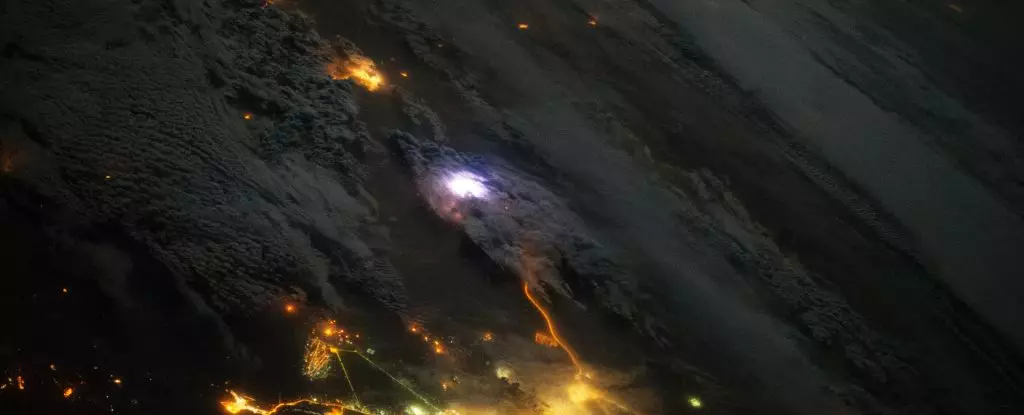Lightning storms are iconic natural phenomena, captivating and terrifying in equal measure. Our understanding of these electrical tempests has evolved significantly, revealing that their effects extend far beyond the surface of the Earth, penetrating into the realms of space weather. Recent research conducted by a team of scientists at the University of Colorado has uncovered a fascinating relationship between lightning strikes and high-energy particles known as “killer electrons,” which inhabit the Van Allen radiation belts surrounding our planet. This newfound connection raises important considerations for both space technology and human health in outer space.
Earth is essentially wrapped in a protective shield known as the Van Allen radiation belts, which trap charged particles emitted by the sun. These belts consist of an inner and outer layer, extending from approximately 640 kilometers to nearly 58,000 kilometers above the planet’s surface. While this natural barrier serves to protect the Earth from harmful solar winds, it also hosts a dynamic environment where various charged particles can behave unpredictably. Traditionally viewed as stable, the inner radiation belt has now revealed itself to be much more volatile due to lightning’s influence.
Max Feinland, an aerospace engineer leading the research team, emphasized the potential dangers posed by these killer electrons. Unlike their lower-energy counterparts, these particles travel at relativistic speeds—near that of light—making them particularly hazardous for satellites and astronauts alike. They can penetrate solid materials, thereby damaging both electronic components and human cells. In short, these electrons epitomize one of the significant hazards faced in our increasingly technological space age.
The crux of this newfound understanding lies in the phenomenon of electromagnetic waves generated by lightning strikes. Known as whistler waves, these low-frequency radio waves ripple through the Earth’s atmosphere and can penetrate the radiation belts. Feinland’s analysis of satellite data spanning a decade revealed a staggering 45 significant surges of high-energy electrons, which occurred almost concurrently with lightning strikes. This observed correlation suggests that lightning may serve as a catalyst in the release of killer electrons from the confines of the radiation belts.
The mechanism behind this interaction remains an area of exploration. As whistler waves travel through the plasma of the radiation belt, they can seemingly intermingle with lower-energy electrons, gifting them extra energy and accelerating them into the realm of high-energy particles. This process results in a cascading effect that culminates in the release of killer electrons, highlighting the intricate dance of forces in Earth’s atmosphere and outer space.
Understanding the relationship between lightning and killer electrons has significant implications for astronauts and space missions alike. This knowledge is especially important during heavy lightning activity, which could elevate the risk of exposure to harmful radiation. More refined insights into the conditions necessary for this process to occur could shape how we prepare for human space travel, ensuring the safety of crewed missions and the longevity of integral technology in orbit.
Ongoing research endeavors are required to dissect the complexities of how various factors, such as solar activity and plasma density, influence the generation of these dangerous electrons. Future observational studies and data collection are crucial in aiding our understanding of the wave-particle interactions that give rise to killer electrons. With this knowledge, strategies for better protecting astronauts, satellites, and other equipment from these hazards can be developed.
This investigation into the connection between lightning storms and space weather highlights a remarkable interplay between terrestrial and extraterrestrial phenomena. Lightning is often perceived solely as a dangerous meteorological event; however, it has the capability to significantly impact the environment surrounding our planet, illustrating the interconnectedness of Earth’s processes with those occurring in space.
As we continue to explore beyond our home planet, recognizing the profound effects of such seemingly ordinary events is essential. Lightning storms are not mere spectacles; they may hold keys to enhancing our understanding of space weather, vital for the safe navigation of future space explorers and the preservation of our technological investments in orbit. As we probe deeper into this topic, staying attuned to the rhythmic shifts of the natural world is of the utmost importance. Indeed, when we think of the interplay between Earth and space, it may very well be that we should heed the storms above.


Leave a Reply